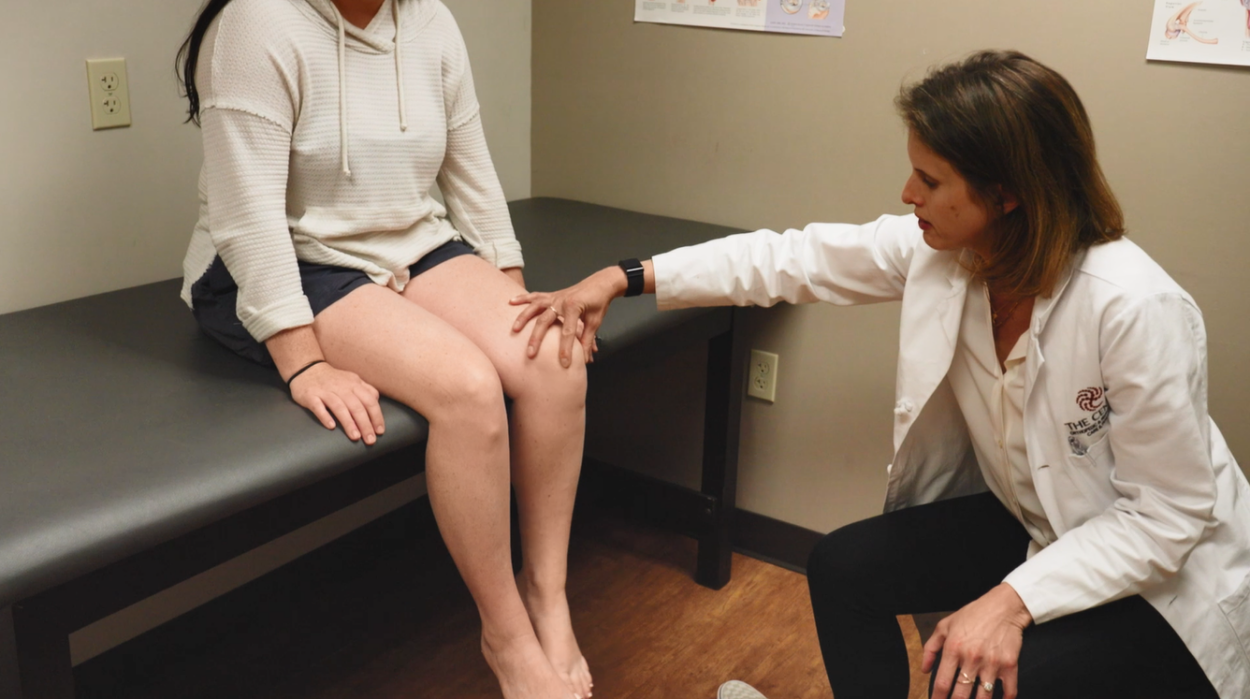
Due to the unique anatomy and biomechanics of the female body, it’s essential to be aware of the potential knee injuries that may arise. In this article, we will explore the most common knee issues faced by active women, along with practical tips to prevent and manage them effectively.
Overuse Injuries: Runner’s Knee and Patellofemoral Pain Syndrome
Two prevalent overuse injuries affecting the knee joint are patellar tendonitis (often known as runner’s knee) and patellofemoral pain syndrome (PFPS). These sports injuries are linked to muscle imbalances, muscle tightness, and weakness in the core and glutes.
Patellar tendonitis occurs when the tendon connecting the kneecap to the shinbone becomes inflamed due to repetitive stress. PFPS, on the other hand, causes pain in the front of the knee, resulting from improper tracking of the kneecap over the thigh bone.
Traumatic Injuries: ACL Tears
Among active women and young female athletes, traumatic knee injuries often involve tears to the anterior cruciate ligament (ACL). The ACL plays a crucial role in providing stability to the knee joint, especially during high-impact activities that involve jumping, pivoting, and sudden changes in direction. The female anatomy, characterized by a wider pelvis and narrower knees, can create greater stress on the ACL and surrounding tissues, making female athletes more susceptible to ACL injuries than their male counterparts.
Understanding Muscle Imbalances and Quadriceps Dominance
Active women tend to be quad-dominant. This means that they rely more on their quadriceps muscles at the front of the thighs and often neglect the posterior musculature, including the glutes and hamstrings. This imbalance can lead to excessive strain on the front of the knees, contributing to an increased risk for various knee issues.
The Importance of Individualized Treatment
Not all knee injuries are the same, and individual differences play a significant role in determining the appropriate treatment and rehabilitation plan. Seeking professional assistance is crucial to identify the specific issues and pathology underlying the knee injury accurately. An orthopedic specialist can help isolate the problem areas and design a personalized program for targeted muscle strengthening and stabilization for ACL injury prevention.
Preventing Knee Injuries in Female Athletes
Female athletes can take several proactive measures to help prevent knee injuries. While no method can guarantee complete injury prevention, implementing these strategies can significantly reduce the risk:
- Strength Training: Focus on building and maintaining muscle strength around the knees, including the quadriceps, hamstrings, and glutes. Strengthening these muscles helps stabilize the knee joint and reduces the risk of injuries.
- Proper Warm-up and Cool Down: Always perform a thorough warm-up before training or competition. Dynamic stretching and light exercises can prepare the muscles and joints for physical activity. Similarly, cool down with static stretches to maintain flexibility.
- Balance and Coordination Training: Incorporate balance and proprioception exercises into the training routine. These exercises enhance stability and improve the body’s ability to react to sudden movements or shifts in weight.
- Appropriate Footwear: Choose proper sports shoes that provide adequate support and cushioning for the activity. Ill-fitting or worn-out shoes can contribute to knee problems.
- Cross-Training: Participate in a variety of sports and exercises to prevent overuse injuries. Cross-training allows different muscle groups to be engaged, reducing the strain on specific areas.
- Rest and Recovery: Allow sufficient time for rest and recovery between training sessions or competitions. Overtraining can lead to fatigue and increase the risk of injuries.
- Maintain a Healthy Diet: Proper nutrition plays a vital role in maintaining overall health and supporting injury prevention. A balanced diet with sufficient nutrients helps keep muscles and bones strong.
- Listen to the Body: Pay attention to any signs of discomfort or pain. If you experience persistent knee pain or discomfort, you should seek medical attention and avoid pushing through the pain.
- Injury Rehabilitation: If a previous knee injury occurs, it’s crucial to undergo proper rehabilitation, such as physical therapy, under the guidance of a qualified healthcare provider before returning to full activity.
- Avoiding Overuse: While training is essential for athletic performance, overtraining or excessive repetition of certain movements can increase the risk of knee injuries. Balance training and rest to avoid overuse injuries.
- Supplement with Yoga: Incorporating yoga into your fitness routine can be highly beneficial for active women, especially those recovering from knee injuries. Yoga not only promotes flexibility and balance but also helps establish a strong mind-body connection. Engaging different muscle groups through yoga can enhance joint stability and improve overall knee health.
In this short video, sports medicine physician, Dr. Ekaterina Urch, provides expert insights on active female knee concerns.
Overuse injuries like runner’s knee and PFPS, along with traumatic incidents like ACL tears, can be challenging to manage, but with the right approach, they can be overcome. Recognizing the unique challenges posed by the female anatomy, such as muscle imbalances and quadriceps dominance, can help female athletes to take proactive steps in preventing knee injuries.
If you are experiencing knee pain or discomfort, it is important to seek guidance from your orthopedic provider. Timely consultation with a qualified orthopedic doctor can help identify the underlying cause of the pain and implement appropriate measures to prevent any further injury or complications. Taking proactive steps in managing knee health will enable you to continue pursuing your active lifestyle safely and with confidence.





